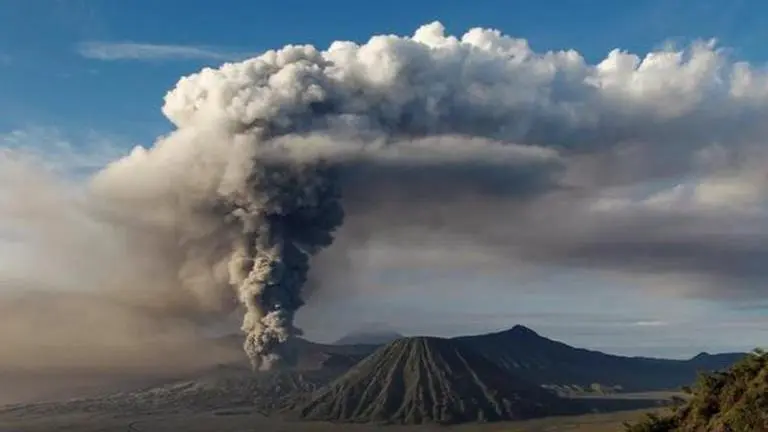Updated 27 August 2021 at 23:17 IST
Volcanic eruptions caused first 'whiffs' of Oxygen in Earth's atmosphere: Study
Volcanic eruptions might have stimulated population surge of marine microorganisms creating first puffs of oxygen into atmosphere, revealed analysis of rocks
- Science News
- 3 min read

Volcanic eruptions might have stimulated the surge in the population of marine microorganisms creating the first puffs of oxygen into the atmosphere, the analysis of 2.5 billion-year-old rocks from Australia has revealed. The latest revelations regarding the volcanic eruptions would change the existing stories around the early atmosphere of the Earth that mainly assumed that most of the changes in the early days of the green planet were controlled by geological or chemical processes.
The findings of the analysis were published in the journal ‘Proceedings of the National Academy of Sciences.’ Although the research is focused on Earth’s early history, the results also have implications for extraterrestrial life and even climate change. The study was led by the University of Washington, the University of Michigan and other institutions.
"What has started to become obvious in the past few decades is there actually are quite a number of connections between the solid, nonliving Earth and the evolution of life," said first author Jana Meixnerova, a UW doctoral student in Earth and space sciences.
"But what are the specific connections that facilitated the evolution of life on Earth as we know it," questioned Meixnerova.
Earth’s became oxygen-rich about 2.4 bn years ago
Earth’s atmosphere became permanently rich in oxygen about 2.4 billion years ago, according to researchers, it is likely after an explosion of lifeforms that photosynthesise, transforming carbon dioxide and water into oxygen. Back in 2007, co-author Ariel Anbar at Arizona State University analysed rocks from Mount McRae Shale in Western Australia. Anbar reported a short-term whiff of oxygen around 50 to 100 million years before it ultimately became a permanent fixture in the atmosphere.
The more recent research has confirmed that there were short-term oxygen spikes but failed to explain the rise and fall in its levels. In the latest study published on Thursday by researchers at the University of Michigan and led by co-corresponding author Joel Blum, they analysed the same ancient rocks for the concentrations and number of neutrons in the element mercury, emitted by volcanic eruptions.
Advertisement
Massive volcanic eruptions blast mercury gas into the upper atmosphere where it remains for a couple of years before raining onto Earth’s atmosphere. The new research showed the spike in mercury a few million years before the temporary rise in oxygen. "Sure enough, in the rock below the transient spike in oxygen, we found evidence of mercury, both in its abundance and isotopes, that would most reasonably be explained by volcanic eruptions into the atmosphere," said co-author Roger Buick, a UW professor of Earth and Space Sciences.
The authors of the study have also reasoned that in the places where there were volcanic emissions, there must be lava and volcanic ash fields. Those rocks, rich in nutrients, would have weathered in the wind and rain, introducing phosphorus into rivers that could fertilise nearby coastal areas. This would have further allowed oxygen-producing cyanobacteria and other single-celled lifeforms to flourish.
Advertisement
"There are other nutrients that modulate biological activity on short timescales, but phosphorus is the one that is most important on long timescales," Meixnerova said. "During weathering under the Archaean atmosphere, the fresh basaltic rock would have slowly dissolved, releasing the essential macro-nutrient phosphorus into the rivers.”
"That would have fed microbes that were living in the shallow coastal zones and triggered increased biological productivity that would have created, as a byproduct, an oxygen spike," Meixnerova explained.
Image: Unsplash - Representative Image
Published By : Aanchal Nigam
Published On: 27 August 2021 at 23:17 IST
